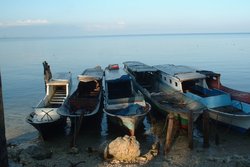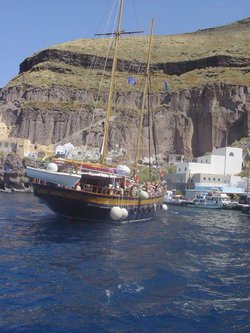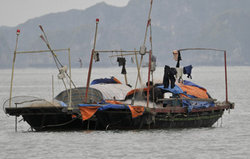Boat
|
|
A boat is a watercraft, usually smaller than most ships. Some boats are commonly carried by a ship or on land using trailers.
A boat consists of one or more buoyancy structures called hulls and some system of propulsion, such as a screw, oars, paddles, a setting pole, a sail, paddlewheels or a water jet.
| Contents |
Boats
|
Unusual uses of the word "Boat"
- Often in rowing as a racing-type competitive sport, "boat" means the crew and "shell" means the craft. So a university might refer to its first boat, meaning the rowers who make up their best team, rather than their best piece of equipment.
- A submarine is generally referred to as a boat rather than a ship.
- A ship can be informally known as a boat, especially by its crew. This use is uncommon in the case of a warship.
- In cockney rhyming slang, "boat" means face, from "boat race".
- In UK English the term "gravy boat" is used to describe a small jug used to dispense meat gravy at the dining table. Similarly: "sauce boat".
- A boat can also be one of the massive cars manufactured in America from the 1950s through the 1970s.
Unusual types of boats
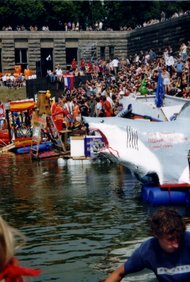
Unsuitable floating vehicles have been used for sports purposes as well. For example, the Bathtub Boat is used in "bathtub races" in many cities, although it originated in Nanaimo, BC, Canada.
Nautical Terminology
Directions
A specialized set of terms is used to designate directions relative to a boat or ship.
The bow is the foremost point on the ship: the point that is at the front when the vessel is under way. Strictly this is the bows. A bow is one of the two curved structures each side of the foremost point of he hull. It is the same word as that used for the curved weapon or the hair decoration. The stern is the after end of the hull. The adjectives fore/forward and aft mean towards the bow and stern, respectively and are used only when the frame of reference is within the vessel. Outside the vessel, the corresponding terms are ahead and astern.
The left and right sides of a ship, relative to a person in the vessel and facing forward, are termed port and starboard respectively.
The side of the ship towards which the wind is blowing is referred to as the weather side. The direction from which a wind is blowing is the windward The side of the vessel away from the wind is termed the lee side side. The direction down wind is the leeward (pronounced looard).
More specific directions can be given in relation to the Earth, using "the points of the compass". In relation to the boat, there are 8 points in each quarter of a circle surrounding it, so a direction can be described in the following manner, "two points on the starboard bow" or "three points abaft the port beam". This terminology is however, archaic. These two examples would in practice, be green 34 and red 124 respectively, or starboard 34 and port 124.
Parts of a Boat
The roughly horizontal but cambered structures spanning the hull of the boat are referred to as the "deck". In a ship, there would be several but a boat is unlikely to have more than one. The similar but usually lighter structure which spans a raised cabin is a coarch-roof. The "floor" of a cabin is properly known as the sole but is more likely to be called the floor. (A floor is properly, a structural member which ties a frame to the keelson and keel.) The underside of a deck is the deck head. The vertical surfaces dividing the internal space are "bulkheads". Some are important parts of the vessel's structure.
It is modern somewhat risible, practice to call command area of a large boat the "bridge". It is the cockpit or wheelhouse, depending on its design.
The compartments housing a toilet, and the toilet itself, are known as the "heads", and a trip to this area is a "head call".
In the old days, cordage intended for the delicate hands of a yacht's owner was of linen, later cotton. Therefore cordage used to control a sailing boat, tends to be referred to as "line" rather than rope. Most have specific names, but in general, lines used for raising things like sails and flags are "halyards" while the principal ones for adjusting the positions of the sails are called "sheets".
All the lines and wire collectively are referred to as "rigging". That which is set up in the yard and left is standing rigging. That which is adjustable in use is running rigging. For example, a forestay is standing rigging and a sheet or a halyard is part of the running rigging. Image:Barge_holland_ack.jpg
History
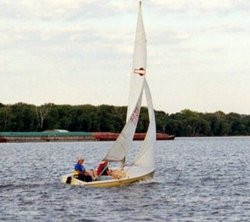
- logboat
- skinboat
- Raft
- Galley
- Sailboat
- West Africa, 18000 BC
- Egypt, 3500 BC
- Chinese Junk, 8th century
- Norse, 9th century
- Steamboat (1777)
- Ironclad (1859-1862)
- Steel Ships (1880s)

